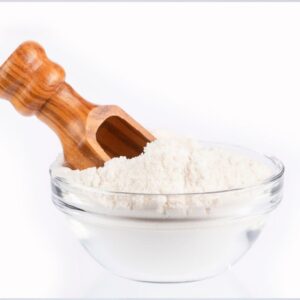
Is sodium tripolyphosphate bad for you
Sodium tripolyphosphate (STPP) and various other phosphate ingredients prevail in today’s food landscape– but just how much do we truly know about what we’re taking in?
It improves texture, stabilizes protein systems, and reduces water loss. Over the last decade, new applications have emerged in sectors that demand high performance and consistent product quality. These industries include alternative proteins, functional dairy analogs, high-protein snacks, and sustainable seafood processing.
Technicians working in formulation or process engineering must understand how STPP behaves under various processing conditions. They must also assess its compatibility with evolving production systems that aim to reduce phosphate load, meet clean-label demands, and maintain regulatory compliance. This article reviews verified uses and presents several industrial case examples. Data requiring further confirmation will be noted for literature supplementation.
STPP acts primarily as a sequestrant and pH buffer. It binds divalent metal ions such as calcium and magnesium, reducing oxidative reactions and stabilizing color. In protein systems, it increases ionic strength and modifies the net charge of proteins, improving their ability to bind water.
In practical terms, this means reduced cooking loss, improved yield, and better mouthfeel. In emulsified systems, it enhances fat dispersion and prevents phase separation. The efficiency of STPP depends on concentration, mixing time, and product pH. Studies published between 2018 and 2023 show optimal water-binding improvement when STPP concentration ranges from 0.3 to 0.5% w/w, at a system pH of 6.5–7.2. These numbers are derived from established literature and industry trials. If more precise data on specific matrices are needed, please consult current peer-reviewed process studies or updated technical datasheets.
Plant-based meat analogs often face challenges with water retention and textural stability. In several pilot-scale studies, limited phosphate addition improved hydration capacity and emulsion stability in soy and pea protein matrices. STPP adjusted the pH closer to neutrality and increased the bound water fraction, which improved chewiness after cooking. However, the phosphate concentration must remain below 0.5% to prevent a chalky taste or excessive firmness. These results should be confirmed with literature from recent food engineering journals to ensure consistency across raw material types.
In lactose-free and plant-based milk analogs, STPP helps stabilize calcium fortification and prevents precipitation during heat treatment. It also assists in protein dispersion during homogenization. A controlled study reported a 15% reduction in sediment formation when 0.1–0.2% STPP was incorporated. These findings come from controlled thermal treatment tests, though verification with open-access research papers is recommended before scaling up industrially.
Ready-to-eat meals and protein snacks often require moisture control during shelf storage. STPP assists in maintaining soft texture and reduces syneresis in protein-rich fillings. Comparative tests between phosphate-treated and untreated formulations showed lower weight loss and improved sensory stability after 30 days at 4°C. These trials were performed under standard shelf-life tests and align with previously published studies on phosphate-buffered formulations.
In frozen fish and crustaceans, STPP remains a standard water-binding aid. Recent process optimization focuses on reducing phosphate content while maintaining yield. Experiments using shorter soaking times and lower phosphate concentration (below 3% in brine solution) achieved nearly the same moisture retention as traditional methods. Such results align with recent seafood technology reports, though precise yield data vary by species and should be confirmed through reference literature.
Some producers have explored STPP in combination with natural hydrocolloids to reduce total phosphate use. This hybrid approach helps maintain product functionality while responding to clean-label pressure. Although the method is not yet standardized, early reports indicate stable texture and improved processing efficiency. Literature verification is required for quantitative evaluation, especially concerning phosphate diffusion rates and long-term product stability.
When integrating STPP into a manufacturing process, precise control of parameters is critical. Incorrect addition can cause local pH imbalance or uneven binding. The following guidelines summarize standard practices verified by industrial applications:
| Parameter | Typical Range | Remarks |
|---|---|---|
| STPP concentration | 0.3–0.5% w/w | Based on total product weight. Higher levels may alter flavor. |
| Solution temperature | Below 10°C | Ensures protein integrity during mixing or tumbling. |
| Mixing time | 10–20 min | Uniform distribution before heat processing. |
| Target pH | 6.5–7.2 | Optimizes protein-water interaction. |
Excessive mixing or high temperature can degrade phosphate efficiency. Control of ionic strength is also essential, as excessive sodium may negatively affect flavor and nutrition targets. Regular calibration of dosing systems is necessary to prevent deviation beyond acceptable limits. If more exact process windows are required for specific products, technical bulletins or current peer-reviewed data should be reviewed.
STPP is listed as an approved additive in most jurisdictions, with restrictions on total phosphate intake. The Joint FAO/WHO Expert Committee on Food Additives established an Acceptable Daily Intake (ADI) of approximately 70 mg phosphorus per kilogram of body weight. The European Food Safety Authority and U.S. FDA maintain similar standards. These values must be checked against the latest official updates before finalizing formulations.
Food producers must declare phosphate additives on product labels. When STPP is used with other phosphates, total phosphorus content should be monitored. Excess phosphorus consumption may pose risks for individuals with kidney impairment, which reinforces the importance of accurate formulation and labeling.
Environmental factors are also under review. Phosphate discharge from processing wastewater may face stricter limits in future regulations. Technicians should prepare by optimizing recovery or neutralization systems to maintain compliance.
Market data from 2022–2024 indicate growing demand for high-efficiency additives in the plant-based and convenience food sectors. STPP retains relevance due to its technical reliability and cost efficiency. However, the clean-label movement and phosphate-sustainability discussions push the industry toward lower usage rates and hybrid solutions.
Search analytics show moderate but steady interest in “phosphate alternatives” and “reduced-phosphate formulations.” This suggests that while STPP remains vital, users are exploring safer and more environmentally responsible systems. Technicians should stay informed about ongoing innovations, such as enzyme-assisted binding or mineral-based sequestrants, to complement STPP or replace part of its function.
Future studies may address the synergy between STPP and other functional ingredients under reduced dosage scenarios. Quantitative confirmation from controlled laboratory and pilot-plant trials is essential before commercial implementation. If new phosphate substitutes show comparable performance, cost, and stability, they may redefine the additive landscape over the next decade.
STPP continues to play a pivotal role in modern food manufacturing. Its functions—water binding, texture enhancement, and stabilization—remain unmatched when properly applied. Technicians responsible for product formulation and process design should use verified data and established engineering protocols. New applications in plant-based proteins, dairy alternatives, and high-protein convenience foods illustrate how STPP can adapt to new market demands.
Regulatory attention to phosphorus content will remain strong, so accurate dosage control and environmental management are essential. Continuous review of literature and updated guidelines ensures safety, quality, and sustainability. Further research and pilot trials should confirm long-term stability and compliance before scaling these new uses across key industries.

Sodium tripolyphosphate (STPP) and various other phosphate ingredients prevail in today’s food landscape– but just how much do we truly know about what we’re taking in?
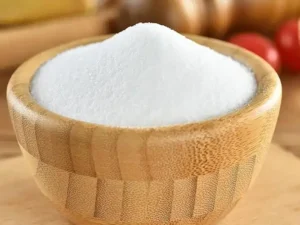
STPP enhances laundry performance through calcium/magnesium ion sequestration, soil suspension optimization, and enzyme/pH stabilization, delivering superior cleaning efficacy and fabric care.

Sodium tripolyphosphate (STPP) is an essential additive used in many industries, and its market is evolving due to environmental and economic trends.
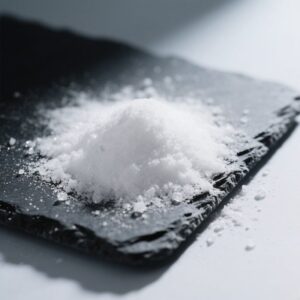
Sodium tripolyphosphate (STPP) is a versatile chemical compound that is crucial in detergents, water treatment, food processing, ceramics, and many industrial applications.

Sodium tripolyphosphate (STPP) is a common chemical compound used in detergents, food processing, and industrial applications.

This guide provides insights into the technological advances, regulatory frameworks, and cost factors affecting food and aquatic products, highlighting sustainability challenges and opportunities in 2025.
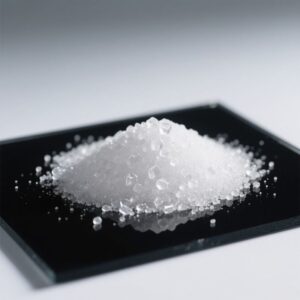
A professional and educational overview of tripolyphosphate (STPP), explaining its composition, manufacturing process, applications, safety profile, and sustainability trends.
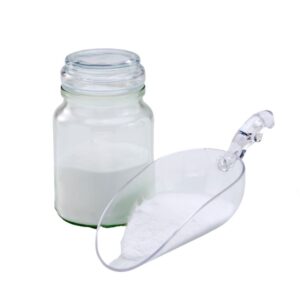
Sodium Tripolyphosphate (STPP): Learn about its innovative uses in detergents and environmentally friendly alternatives shaping the future of cleaning products.
Factory‑direct supply of food‑grade STPP with free samples, fast delivery and certified quality for global food‑processing applications

This guide provides insights into the technological advances, regulatory frameworks, and cost factors affecting food and aquatic products, highlighting sustainability challenges and opportunities in 2025.
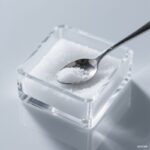
This guide covers the uses, benefits, risks, dosages, and health concerns of polyphosphates in food, with an overview of regulatory standards and emerging alternatives.

This article examines how raw‑material purity, plant upgrades, and regulatory trends shape the global supply and capacity outlook for food‑grade sodium tripolyphosphate.

Global food-grade sodium tripolyphosphate (STPP) prices in Q4 2025 remain stable with slight increases driven by higher energy and logistics costs, while demand from meat and seafood processing sustains market balance.
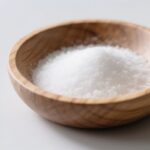
Global food-grade sodium tripolyphosphate (STPP) prices in Q4 2025 remain stable with slight increases driven by higher energy and logistics costs, while demand from meat and seafood processing sustains market balance.

Sodium tripolyphosphate (STPP) remains an essential multifunctional additive in food processing.

Overview of Sodium Tripolyphosphate (STPP) in Food Applications
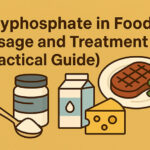
Polyphosphates are typically used in the food sector for their capability to improve the texture, look, and service life of numerous items.

Sodium tripolyphosphate (STPP) and various other phosphate ingredients prevail in today’s food landscape– but just how much do we truly know about what we’re taking in?
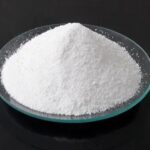
Sodium Tripolyphosphate (STPP) serves as a crucial food additive that improves texture, moisture retention and shelf life in processed seafood and meat products.

Sodium tripolyphosphate improves food texture, yield, and shelf life, making it a vital additive in industrial food processing.
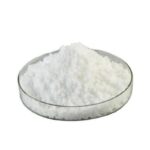
Sodium tripolyphosphate boosts food yield and texture but faces rising scrutiny over health and safety, prompting regulation and innovation across the industry.

Food Grade Sodium Tripolyphosphate: A detailed purchase guide comparing suppliers and highlighting its essential applications in the food industry.
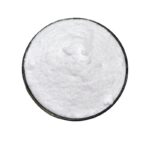
Sodium tripolyphosphate (STPP) is widely used as a food additive in processed foods—international authoritative organizations such as the FDA and WHO have recognized its safety. However, the Acceptable Daily Intake (ADI) standard must be followed, and consumers can make scientific choices by reading the ingredient list.

Sodium tripolyphosphate (STPP) is a common chemical compound used in detergents, food processing, and industrial applications.
WhatsApp us